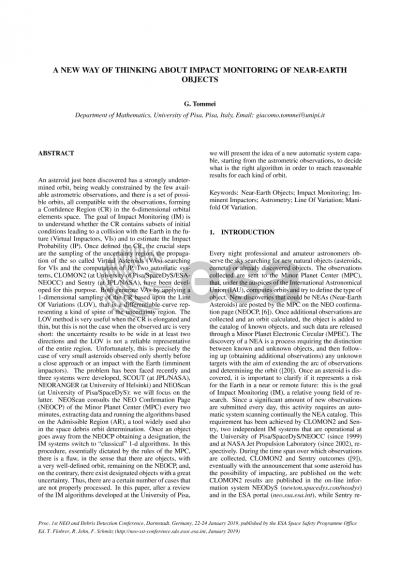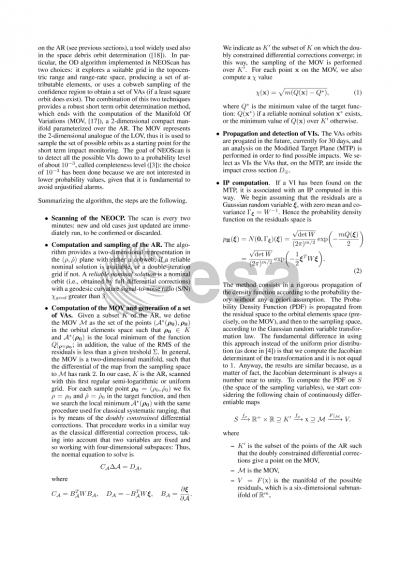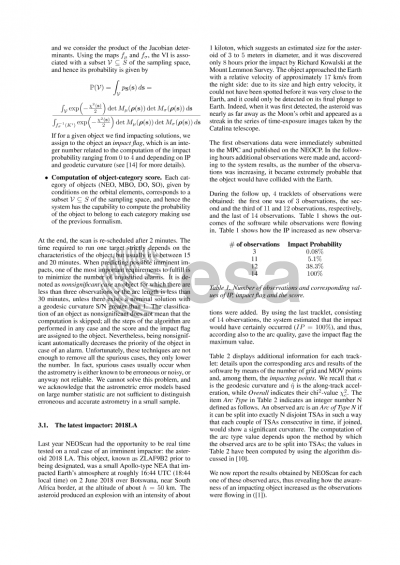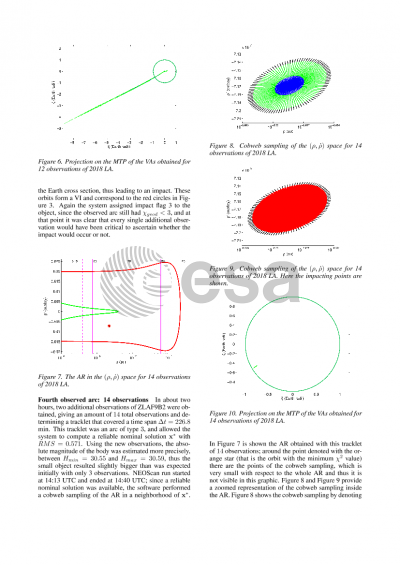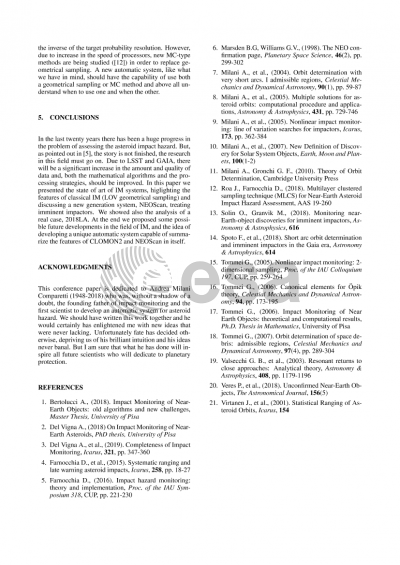Document details

Abstract
An asteroid just been discovered has a strongly undetermined orbit, being weakly constrained by the few available astrometric observations, and there is a set of possible orbits, all compatible with the observations, forming a Confidence Region (CR) in the 6-dimensional orbital elements space. The goal of Impact Monitoring (IM) is to understand whether the CR contains subsets of initial conditions leading to a collision with the Earth in the future (Virtual Impactors, VIs) and to estimate the Impact Probability (IP). Once defined the CR, the crucial steps are the sampling of the uncertainty region, the propagation of the so called Virtual Asteroids (VAs) searching for VIs and the computation of IP. Two automatic systems, CLOMON2 (at University of Pisa/SpaceDyS/ESA-NEOCC) and Sentry (at JPL/NASA), have been developed for this purpose. Both generate VAs by applying a 1-dimensional sampling of the CR based upon the Line Of Variations (LOV), that is a differentiable curve representing a kind of spine of the uncertainty region. The LOV method is very useful when the CR is elongated and thin, but this is not the case when the observed arc is very short: the uncertainty results to be wide in at least two directions and the LOV is not a reliable representative of the entire region. Unfortunately, this is precisely the case of very small asteroids observed only shortly before a close approach or an impact with the Earth (imminent impactors). The problem has been faced recently and two systems were developed, SCOUT (at JPL/NASA) and NEOScan (at University of Pisa/SpaceDyS): we will focus on the latter. NEOScan consults the NEO Confirmation Page (NEOCP) of the Minor Planet Center (MPC) every two minutes, extracting data and running the algorithms based on the Admissible Region (AR), a tool widely used also in the space debris orbit determination. Once an object goes away from the NEOCP obtaining a designation, the IM systems switch to “classical” 1-d algorithms. In this procedure, essentially dictated by the rules of the MPC, there is a flaw, in the sense that there are objects, with a very well-defined orbit, remaining on the NEOCP, and, on the contrary, there exist designated objects with a great uncertainty. Thus, there are a certain number of cases that are not properly processed. In this paper, after a brief review of the IM algorithms developed at the University of Pisa, we will present a new way to decide, starting from the astrometric observations, what is the right algorithm in order to reach reasonable results for each kind of orbit.
Preview
